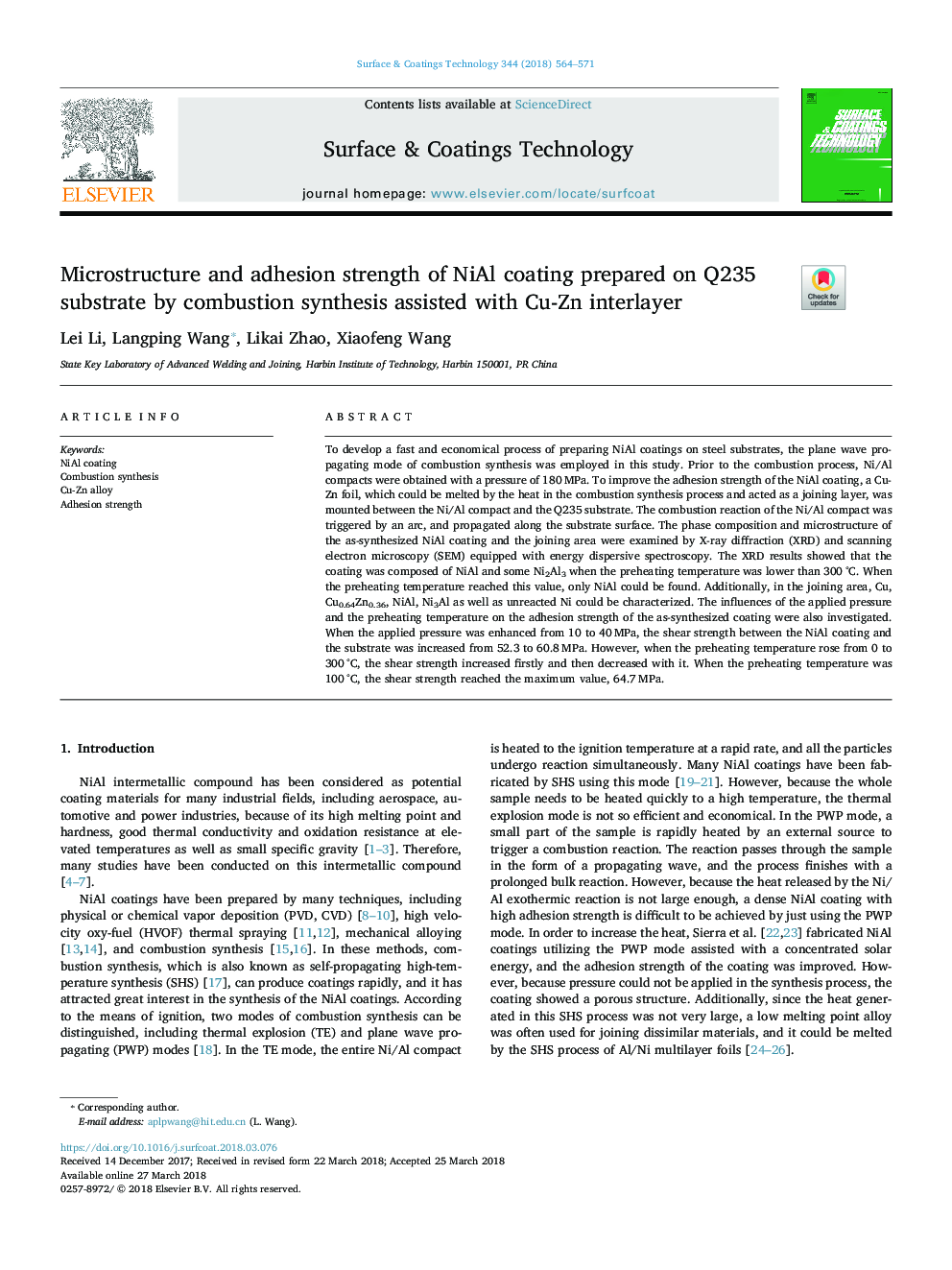| کد مقاله | کد نشریه | سال انتشار | مقاله انگلیسی | نسخه تمام متن |
|---|---|---|---|---|
| 8023854 | 1517539 | 2018 | 8 صفحه PDF | دانلود رایگان |
عنوان انگلیسی مقاله ISI
Microstructure and adhesion strength of NiAl coating prepared on Q235 substrate by combustion synthesis assisted with Cu-Zn interlayer
دانلود مقاله + سفارش ترجمه
دانلود مقاله ISI انگلیسی
رایگان برای ایرانیان
کلمات کلیدی
موضوعات مرتبط
مهندسی و علوم پایه
مهندسی مواد
فناوری نانو (نانو تکنولوژی)
پیش نمایش صفحه اول مقاله

چکیده انگلیسی
To develop a fast and economical process of preparing NiAl coatings on steel substrates, the plane wave propagating mode of combustion synthesis was employed in this study. Prior to the combustion process, Ni/Al compacts were obtained with a pressure of 180â¯MPa. To improve the adhesion strength of the NiAl coating, a Cu-Zn foil, which could be melted by the heat in the combustion synthesis process and acted as a joining layer, was mounted between the Ni/Al compact and the Q235 substrate. The combustion reaction of the Ni/Al compact was triggered by an arc, and propagated along the substrate surface. The phase composition and microstructure of the as-synthesized NiAl coating and the joining area were examined by X-ray diffraction (XRD) and scanning electron microscopy (SEM) equipped with energy dispersive spectroscopy. The XRD results showed that the coating was composed of NiAl and some Ni2Al3 when the preheating temperature was lower than 300â¯Â°C. When the preheating temperature reached this value, only NiAl could be found. Additionally, in the joining area, Cu, Cu0.64Zn0.36, NiAl, Ni3Al as well as unreacted Ni could be characterized. The influences of the applied pressure and the preheating temperature on the adhesion strength of the as-synthesized coating were also investigated. When the applied pressure was enhanced from 10 to 40â¯MPa, the shear strength between the NiAl coating and the substrate was increased from 52.3 to 60.8â¯MPa. However, when the preheating temperature rose from 0 to 300â¯Â°C, the shear strength increased firstly and then decreased with it. When the preheating temperature was 100â¯Â°C, the shear strength reached the maximum value, 64.7â¯MPa.
ناشر
Database: Elsevier - ScienceDirect (ساینس دایرکت)
Journal: Surface and Coatings Technology - Volume 344, 25 June 2018, Pages 564-571
Journal: Surface and Coatings Technology - Volume 344, 25 June 2018, Pages 564-571
نویسندگان
Lei Li, Langping Wang, Likai Zhao, Xiaofeng Wang,